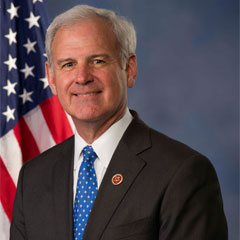
Last Friday the Bureau of Labor Statistics released its monthly jobs report covering November. It contained some good news, some bad news and some downright ugly news.
First, let’s look at the good news. The economy added 245,000 jobs last month and the unemployment rate dropped to 6.7 percent from a high of 14.7 percent in April. We have gained back 12.3 million jobs since the shutdowns of last spring and the unemployment rate is less than half what it had risen to at that time. Over half of all Black people who lost their jobs have gone back to work as have two thirds of Hispanics. The greatest gains have come in the leisure and hospitality industry and in retail businesses, the hardest hit by the shutdowns.
To put this into perspective, the unemployment rate is now lower than at any point in President Obama’s first term and the gains made in the last seven months are greater than in the first four years of the recovery from the Great Recession of 2008-9.
That’s pretty good news, no matter how you look at it. So, what am I referring to when I talk about there being some bad news too? The rate at which we are gaining jobs has fallen significantly. Job growth in September (711,000) and October (610,000) was more than twice as large as November’s. Our bounce back has really slowed.
What’s happened? To some extent we are witnessing the holes left in the American economy. Some places are doing better than others and some industries are still struggling to come back while others are doing well. For example, we know that Blue states have significantly higher unemployment rates than most Red states, the result of the differences in state leaders’ responses to the pandemic. New York’s unemployment rate in October was 9.6 percent, while Alabama’s was 5.8 percent. Similarly, while the leisure and hospitality sector has made a comeback of sorts, it faces the strong headwinds of travel and dining restrictions ordered by many mayors and governors around the country. So, it lags the rest of the economy and will continue to do so until these restrictions are lifted. There are still 9.8 million fewer jobs than in February and every city, state and industry sector needs to return to normal for us to gain those jobs back.
That’s pretty bad news, but at least it has the prospects of improving next year. The really ugly news was the labor force participation rate. This is an example of statistics needing more in-depth explanation. The labor force is the total of all people who have jobs and all people looking for jobs. It doesn’t include adults 65 and under who aren’t working or looking for work. Now some people aren’t working or looking for work because they’re in school or are substantially disabled, while others are caring for young children or an aging parent. Then there are the lucky ones who don’t need to work. So, we never expect the labor force participation rate to be 100 percent.
The peak labor force participation rate was 67 percent at the beginning of 2000. During the Great Recession, when jobs were scarce, people became discouraged and just quit looking for work. By 2015, the labor force participation rate had fallen to 62 percent. As a result of the robust recovery of the last four years it rose again to 64.4 percent. These may seem like small changes, but each percentage point represents millions of people. So, when I tell you the labor force participation rate in November was just 61.5 percent you can see why I call this ugly. While that is an improvement from April’s 60 percent rate, we still saw 400,000 people leave the job market in November alone. It’s very difficult to re-enter the job market once you have left so this is a very troubling development.
There are three things we need to do as a nation to turn this around.
First, mayors and governors around the nation need to be more discerning and judicious in their orders responding to the pandemic. Overly broad and heavy-handed orders are hurting people in their cities and states and are a major drag on the U.S. economy. Governor Ivey has been a good example of how to get it right and as a result our Alabama economy is faring better than most Blue states.
Second, we must speed the vaccine distribution and people should have the confidence in the FDA’s approval and get the vaccine when it’s available to them. The quicker we reach a high vaccination rate, the quicker our economy bounces back. In the meantime, we all need to wear masks inside buildings that aren’t our homes, practice good hygiene and socially distance.
And, third, Congress needs to pass another coronavirus stimulus bill. After playing games this summer and fall, Speaker Pelosi has finally come to the bargaining table with what appears to be a sincere willingness to compromise on a new bill. I anticipate passage of such a bill, perhaps as part of our yearly spending bill, by Christmas. She’s perfectly capable of pulling the ball back at the last minute so I can’t guarantee anything. But there’s some hope out there.
And hope is something we all need right now.
